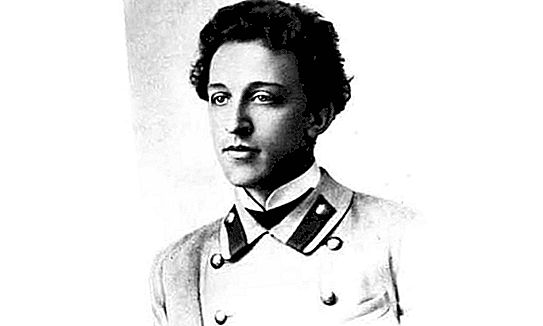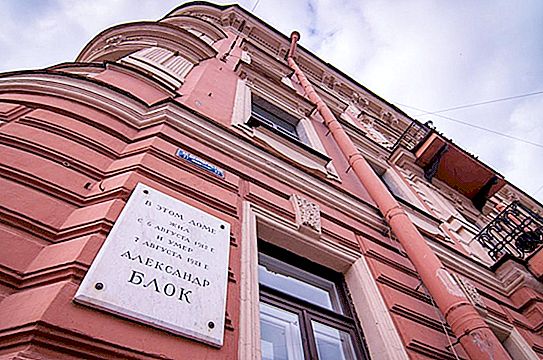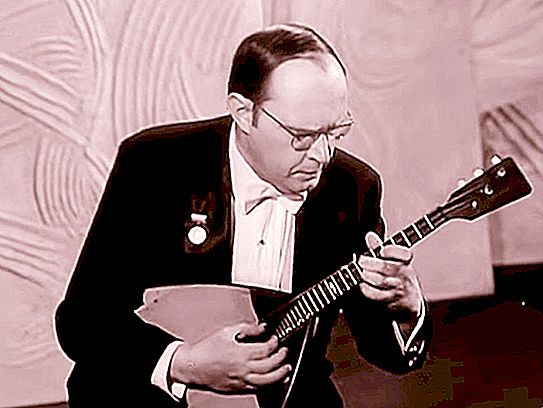Alexander Blok - poet of the Silver Age, romantic and esthetician, writer, translator and publicist, literary critic and playwright - has been imprinted for centuries primarily as a poet of the turn of the century; as a symbol of the endangered beauty of the late nineteenth century, as a harbinger of a new dream, which turned out to be just a ghost for him, as a talented symbolist poet.

The apartment at the address: St. Petersburg, Dekabristov street, 57 now houses a museum. Alexander Blok lived here for nine years: from July 1912 to August 1921. This apartment was the last refuge of the poet.
Home story
House number fifty-seven on Officer Street (now Decembrist Street) is only slightly older than Alexander Alexandrovich Blok. It was built in the period from 1874 to 1876. The owner of the house, the merchant of the first guild M.E. Petrovsky, ordered the house project to the architect M.F. Peterson in order to open a tenement house in it, where each apartment could be rented out. House number fifty-seven on Officer Street was designed for a middle-class public.

Among the first tenants here was the future poet I.F. Annensky, then still a student at St. Petersburg University. He lived in a twenty-third apartment.
The Repins family lived in this house - the wife and children of the painter, and Ilya Efimovich himself often visited them, coming from Finnish Kuokkala to St. Petersburg. Here, in the literal sense of the word through the wall, A. A. Somova-Mikhailova, sister of the artist K. A. Somov, lived for some time. This house was chosen for living by many artists of the Mariinsky Theater.
Apartment number twenty one
Alexander Blok and his wife Lyubov, nee Mendleev, settled in house number fifty seven on June 24, 1912. Then they occupied apartment twenty-one, where they lived until February 1920.
Here, Alexander Blok worked on the drama "Rose and the Cross" (1913). From here in 1916 he went to serve in the engineering part of the All-Russian Zemsky Union. In this apartment, Alexander Blok worked on a manuscript, which was to become part of his report on a new position in the Extraordinary Investigation Commission, which he took up in May 1917.
Apartment number twenty three
In February 1920, Alexander and Lyubov Blok were forced to change their place of residence, fleeing the densification of "lordly apartments" and living in a communal apartment. Apartment number twenty-three, lower than two floors, where by that time the poet’s mother, Aleksandra Andreevna Kublitskaya-Piottukh, had already lived for almost two years, will be the poet’s last refuge on his earthly journey.
In this apartment, Alexander Blok prepared for his eighty-fourth anniversary of the death of A.S. Pushkin his, which became a landmark, speech "On the appointment of the poet." Here, he will be overtaken by a disease caused by overwork and internal contradiction, caused by the collaboration of the new government that he once met with enthusiasm. In this apartment, Alexander Blok will die on August 7, 1921 from inflammation of the heart valves, without having learned about the permission of the authorities to go abroad for treatment.
After the death of the poet
Almost immediately after the death of the poet, she was created in the Blok apartment-museum in St. Petersburg: the widow, Lyubov Dmitrievna, carefully preserved the archive left after Alexander Blok, his library and personal belongings. She not only preserved the legacy of Blok, but also left the memories, entitled “Both the past and the tales of Blok and herself, ” in which she spoke of the poet.
Lyubov Dmitrievna died in 1939. All the things she saved will now be stored in the Pushkin House - the Institute of Russian Literature of the USSR Academy of Sciences. The archives and personal belongings of the Block were available to the public for a short period - in the 60-70s of the last century.





